PPC
50+ Creative March Marketing Ideas (With Examples!)
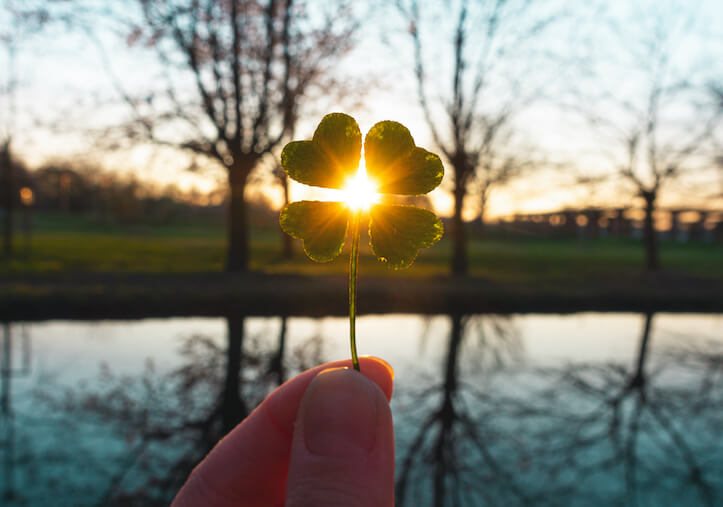
March marketing is basically St. Patrick’s Day, Mardi Gras, and March Madness, right? Wrong. In fact, there’s a national day in March for your erroneous thinking…
But what a good thing to be wrong about, right? Read on for:
- A full list of March awareness causes, holidays, and national days.
- Over 60 creative March marketing ideas for posts, promotions, events, and more.
- Real examples from businesses across a range of verticals.
Table of contents
March awareness causes
There are many awareness causes that you can use for March blogging, promotions, and social media marketing. You can post on or write about these topics throughout the month of March so you’re not tied to a specific date. March is:
- Asset Management Month
- Adopt a Rescued Guinea Pig Month
- Bleeding Disorders
- Brain Injury Awareness Month
- Cerebral Palsy Awareness Month
- Colorectal Cancer Awareness Month
- Craft Month
- National Reading Month
- Endometriosis Awareness Month
- Epilepsy Awareness Month
- Kidney Month
- Kidney Cancer Awareness Month
- Myeloma Action Month
- Multiple Sclerosis Awareness Month
- Problem Gambling Awareness Month
- Red Cross Month
- Self-Injury Awareness Month
- Social Work Month

Use our blog post ideas or even our SEO-optimized blog post templates to get the gears turning!
Diversity, equity & inclusion in March
There are tons of opportunities to demonstrate diversity, equity and inclusion this month. Here are the DEI-friendly awareness causes in March:
- Bisexual Health Awareness Month
- Developmental Disabilities Awareness Month
- Disability Awareness Month
- Ethics Awareness
- Expanding Girls’ Horizons in Science and Engineering Month
- Greek American Heritage Month
- Irish American Heritage Month
- Women’s History Month
And here are some specific observance days:
- International Women’s Day (March 8)
- Equal Pay Day (varies—March 14, 2023)
- World Down Syndrome Day (March 21)
- First day of Ramadan (varies—March 22, 2023)
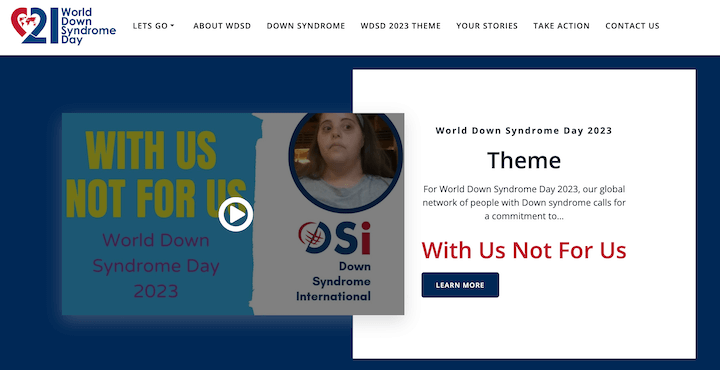
March national days & holidays
There’s a full list of all days and dates at the bottom of this post, but here are some highlights:
Well-known observances:
- Mardi Gras/Fat Tuesday (changes every year—February 21, 2023)
- Ash Wednesday (changes every year—February 22, 2023)
- St. Patrick’s Day (March 17)
- Daylight Savings (changes every year—March 12, 2023)
- First day of spring (changes every year—March 20, 2023)
- Pi Day (March 14)
- MLB Opening Day (changes every year—March 30, 2023)
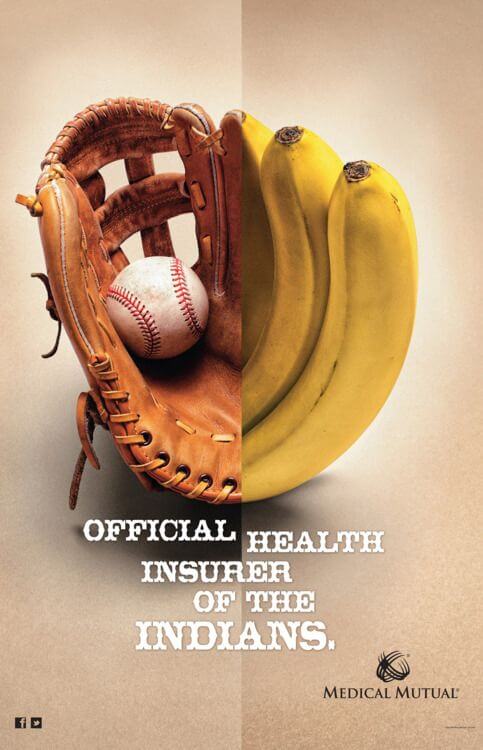
Meaningful days
- Medal of Honor Day (March 25)
- Vietnam Veterans Day (March 29)
- SBDC Day (varies—March 15, 2023)
- Mom and Pop Business Owner Day (March 29)
Fun days
- Dadgum That’s Good Day (March 1)
- Everything You Think is Wrong Day (March 15)
- Something on a Stick Day (March 28)
- Virtual Vacation Day (March 30)
- Awkward Moment Day (March 18)
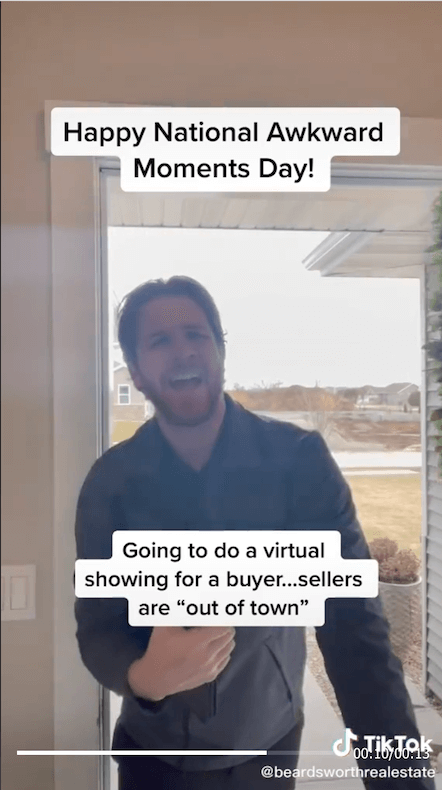
Who knew?
- Triglycerides Day
- Common Courtesy Day
- Near Miss Day
March marketing ideas for DEI
Okay, now let’s dive into some more specific ideas for the events and causes listed above.
Women’s History Month
Take some time in March to honor the women in your business or industry who have made an impact. For example:
- Run an Instagram or Facebook giveaway where entrants share women of history and one line to describe their impact.
- Feature famous females in your geographic and industrial niche.
- Host a webinar or event run by women only or for women only, or both!
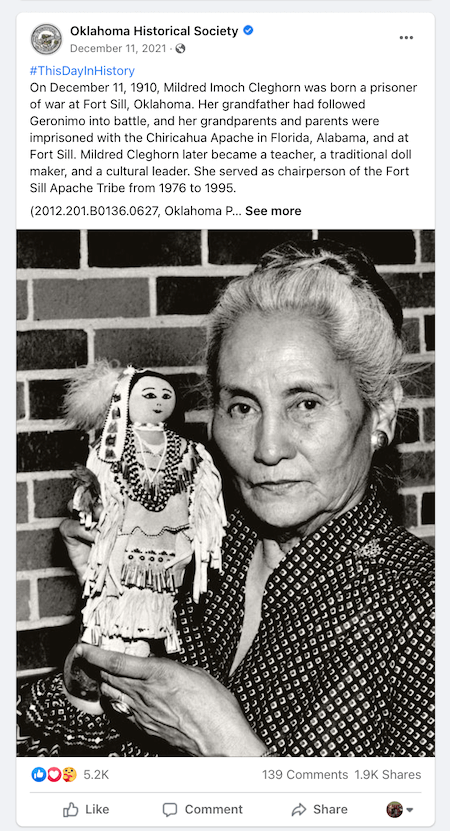
International Women’s Day
International Women’s Day exists to celebrate women’s achievements, raise awareness against bias, and take action for equality. Each year has a different theme, which you can learn about at internationalwomensday.com.
- Share a brief history lesson on a female or group of women in your field or niche.
- Ask your followers to share stories of influential women in their lives.
- Use the year’s designated hashtag in your posts,
- Introduce your customers to the women behind the scenes at your business.
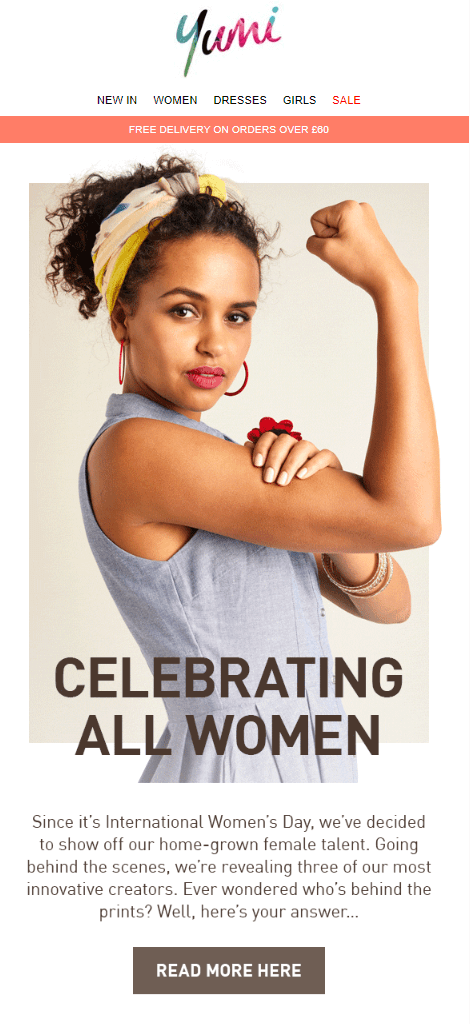
Equal Pay Day
Equal Pay Day was launched on the 50th anniversary of the equal Pay Act and typically occurs the second Tuesday in March. It was created to address the gender wage gap, but in recent years has expanded to also include women of color, LGBTQIA workers, moms, part-time workers, seasonal workers, and more. You could:
- Support the Equal Pay Today campaign by donating a portion of your proceeds.
- Post gender wage gap stats on social media.
- Interview or conduct a poll among women in your community, whether that’s on social media, in your customer base, in your professional network, or even among your staff.
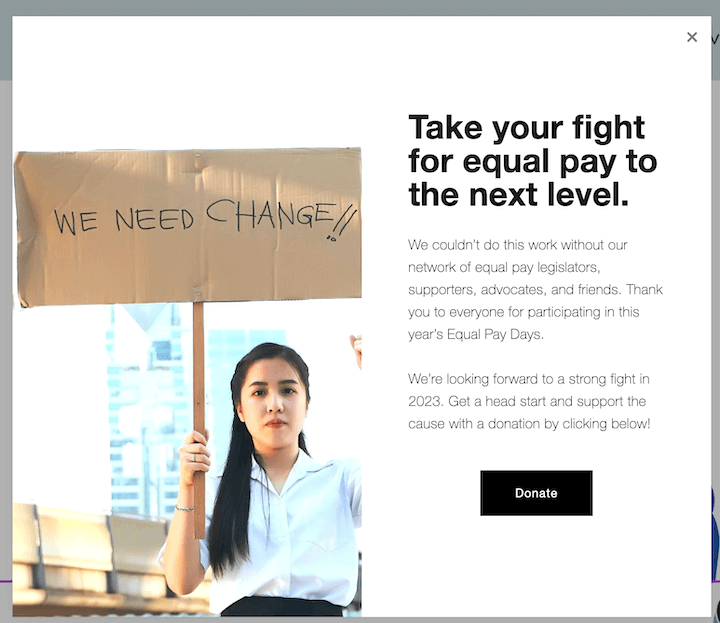
Monthly awareness March marketing ideas
Whether your business is directly related to any of the themes of March doesn’t matter. With a little creativity, you can come up with a relevant and appealing post, campaign, or event for any audience. Let’s take a look at some ideas.
National Reading Month
If content is king (or queen), then reading is the key to the kingdom. You can:
- Share your favorite books and ask your followers to share theirs.
- Ask for book recommendations.
- Post a quote about reading or from your favorite book.
- Run a book drive.
Caffeine Awareness Month
Lots of opportunities to have fun with this one across all the popular social media marketing platforms!
- Run an appropriately themed blog, social post, or video series (stats that will wake you up, tips to ramp up your savings, energize, activate, roast, ramp up, etc.)
- Guide your audience through a month without coffee, including tips on how to achieve the effects of caffeine, without caffeine. Or do it yourself and document your journey.
- Run a weekly coffee chat series over Facebook Live.
- Don’t forget about other caffeine sources like tea, chocolate, soda, and energy drinks!
- Explain something in your industry using a coffee analogy (dark, medium, light roasts, for example).
- When in doubt, turn to the plethora of relatable coffee memes out there.
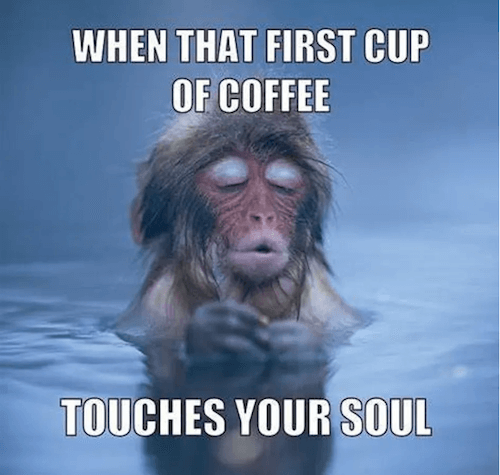
Credit Education Month
This is the perfect month for businesses in the finance category, but any business can take part:
- Invite a guest speaker to run a webinar on improving your credit. This is relevant to anyone paying money to use your products or services.
- Send out an email to your loyal customers playfully framed as, while you can’t give credit tips, you can give them a $X credit on their account (March email subject line ideas here!)
- Kill two birds with one stone and celebrate credit education with women’s history.

National Nutrition Month
This is a great time for restaurants, health food suppliers, and fitness centers to market their products and offerings. You can:
- Provide nutrition tips and healthy recipes through blog posts or email newsletters.
- Run a special deal on your healthiest products.
- You can also be a bit tongue-in-cheek and describe your business as “food for the soul” or highlight true health benefits your services provide that nourish your body or mind.
- Share the latest research and facts and use hashtag #eatright and #NNM to get your posts noticed and shared.
March Madness
The NCAA men’s college basketball tournament tips off in March. There are plenty of ways to get into the spirit:
- Create a March Madness bracket to go with your business.
- Run a competition of your most popular dishes/products and encourage customers to order one of the two dueling items.
- Small businesses in or around college towns can offer patrons a discount for wearing team colors.
- Take pictures of your employees who are getting in the spirit and post them on social media with the hashtag for the team you support.
And even if you have nothing to do with sports, you can still take part. If a bridal boutique, an event planning company, and a dog treat business can find a way to jump on the bandwagon, anyone can.
National day March marketing ideas
Let’s move on to the specific days in March that make great opportunities for promotions and local marketing.
First Day of Spring (March 20)
For those of us in seasonal climates, the first day of spring is always an exciting time, so take advantage of it with ideas like these:
- Get people in the spirit with pastel-rich images on Instagram.
- Run a sidewalk sale, regardless of the weather. If it’s chilly, you can offer hot tea and coffee. If it’s raining, get a tent. Make it a fun “determined to stay positive” event.
- Start a spring series on YouTube or refresh your YouTube channel trailer with a spring theme.

Employee Appreciation Day (first Friday)
A little recognition can go a long way in maintaining your employees’ morale and productivity. Plus, high-spirited and engaged employees make for happier customers. Here are some ways to celebrate:
- Introduce your team members in an Instagram Story or carousel post, with a little something about what each one brings to the table.
- Ask your employees some fun questions and put a write-up of their answers into a blog post.
- For B2B marketing, remind your customers to express their appreciation for their employees.
Keep in mind also that these types of gestures make your business more appealing to potential customers because they humanize your brand.
National Day of Unplugging (March 4)
The first Friday of March is National Day of Unplugging and the perfect day for marketing your spa, yoga studio, or fitness center. Encourage people to visit your facility—offer a special deal for that day—and give people a chance to disconnect from the busy world of the internet and smartphones.
Pi Day (March 14)
Pi Day is March 14 (3.14), not to be confused with actual Pie Day on December first of every year. Ideas for this mathematically magnificent day:
- Schools, daycares, and after school programs can teach children about math and host fun Pi Day events.
- Bakeries and restaurants, why not add an “e” onto the end anyway and run specials on pies or pie baking classes.
- Pi is used for measuring circles. Artists and designers can promote circular or geometric art.
- Find different ways to use the numbers in pi. For example, run a sale of three days, 14 products, 15% off.
St. Patrick’s Day (March 17)
The luck of the Irish is here on March 17 for St. Patrick’s Day.
- Get involved in your community by participating in St. Patrick’s Day parades or Shamrock Shuffle fun runs that are going on. Make sure to use the event’s hashtag to get your posts found by new followers and promote your business.
- Have a green clothing contest in your office and share it on social media.
- Give customers wearing green a special discount or prize for taking a picture and tagging your business.
- Get festive and invite your followers to drop in for limited-time offerings inspired by the luck of the Irish.
- Run a contest and invite people to test their luck! To get more Instagram followers, have them tag someone else in a comment on your post.
- Write a thought leadership piece about luck.
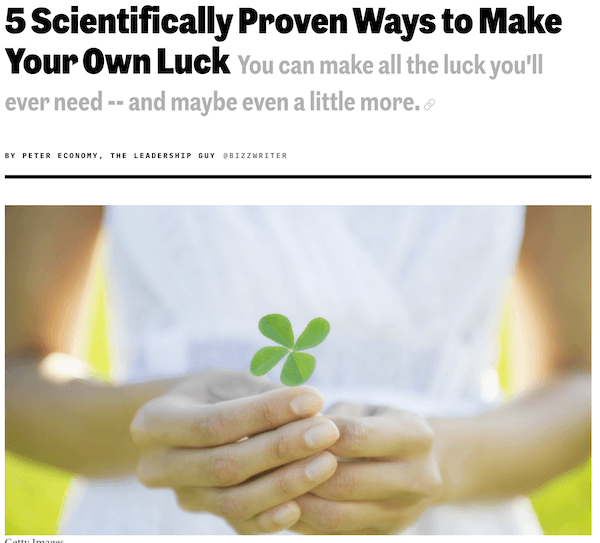
International Puppy Day (March 23)
Marketing isn’t one-size-fits-all, except when it comes to puppies. Everyone.loves.puppies.
- If you’ve got a dog-friendly business, snap photos of patrons and their pups and post them to Instagram, tagging your customers to cultivate those relationships.
- Offer a one-day sale to new customers and show off the pups you currently walk or pet sit on social media. Make sure to hashtag your location to get your posts discovered by nearby potential customers.
- You don’t have to necessarily be a dog walker, groomer, daycare, or sitter. Show off your employees’ pups or, take photos of your own and share with your followers and give people a more personal view of your life.
Earth Hour (March 26)
Participate in the movement to have an electricity-free hour this day. From 8:30-9:30pm, countries around the world will be lighting candles and going dark on electricity. Get your business involved in your local Earth Hour event in your city, or, if there isn’t one, start it! Participating in community activities is a great marketing strategy and a good way to get your business name out there (creative business name ideas here!).
Mom & Pop Business Day (March 29)
How could we miss this one? Here are some ideas:
- Remind your followers to shop local on this small business-friendly holiday.
- Toot your own horn (ideally in conjunction with the above strategies).
- Promote your favorite local partners or even just neighboring small businesses.
Ready for more marketing ideas?
Check out LOCALiQ’s roundup of March social media holidays and ideas or take a look at the other months in our series:
Full list of March marketing national days
As promised, here are the days and dates, courtesy of National Day Calendar.
March 1
- Dadgum That’s Good Day
- Horse Protection Day
- Minnesota Day
- Peanut Butter Lover’s Day
- Pig Day
- Self-Injury Awareness Day
- Pancake Day – IHOP – Changes Annually (March 1, 2022)
- Fat Tuesday – Day Before Ash Wednesday
- Paczki Day – Day Before Ash Wednesday
- Fastnacht Day – Day Before Ash Wednesday
March 2
- Old Stuff Day
- World Teen Mental Wellness Day
- Read Across America Day (Dr. Seuss Day) – if on weekend, moves to closest school day
- Ash Wednesday– Changes Annually
March 3
- Anthem Day
- I Want You to Be Happy Day
- Mulled Wine Day
- Soup It Forward Day
- Hospitalist Day – first Thursday
March 4
- Marching Music Day
- Grammar Day
- Hug a G.I. Day
- Pound Cake Day
- Sons Day
- Tartar Sauce Day – Friday after Lent begins
- Day of Unplugging – first Friday
- Dress in Blue Day – first Friday
- Speech and Debate Education Day – first Friday
- Employee Appreciation Day – first Friday
March 5
- Absinthe Day
- Cheese Doodle Day
- Multiple Personality Day
March 6
- Dentist’s Day
- Dress Day
- Frozen Food Day
- Oreo Cookie Day
- White Chocolate Cheesecake Day
- Finisher’s Medal Day – first Sunday
March 7
- Be Heard Day
- Cereal Day
- Crown of Roast Pork Day
- Flapjack Day
March 8
- International Women’s Day
- Oregon Day
- Peanut Cluster Day
- Proofreading Day
March 9
- Barbie Day
- Crabmeat Day
- Get Over it Day
- Meatball Day
- Registered Dietitian Nutritionist Day – second Wednesday
March 10
- Blueberry Popover Day
- Mario Day
- Pack Your Lunch Day
- Women and Girls HIV/AIDS Awareness Day
- World Kidney Day – second Thursday
March 11
- 311 Day
- Funeral Director and Mortician Recognition Day
- Johnny Appleseed Day
- Oatmeal Nut Waffles Day
- Promposal Day
- Worship of Tools Day
March 12
- Baked Scallops Day
- Girl Scout Day
- Plant a Flower Day
- Working Moms Day
March 13
- Coconut Torte Day
- Earmuff Day
- Good Samaritan Day
- Jewel Day
- K9 Veterans Day
- Open an Umbrella Indoors Day
- Daylight Saving Time – second Sunday
March 14
- Children’s Craft Day
- Learn About Butterflies Day
- Pi Day
- Potato Chip Day
- Write Down Your Story Day
- Napping Day – Day after Return of Daylight Savings Day
March 15
- Everything You Think is Wrong Day
- Kansas Day
- Pears Helene Day
- Shoe the World Day
- World Social Work Day – third Tuesday
- Equal Pay Day – Changes Annually
March 16
- Everything You Do Is Right Day
- Artichoke Hearts Day
- Curl Crush Day
- Freedom of Information Day
- Panda Day
- SBDC Day – third Wednesday
March 17
- Corned Beef and Cabbage Day
- St. Patrick’s Day
- Farm Rescuer Day – third Thursday
- Absolutely Incredible Kid Day – third Thursday
March 18
- Awkward Moments Day
- Biodiesel Day
- Lacy Oatmeal Cookie Day
- Sloppy Joe Day
- Supreme Sacrifice Day
March 19
- Backyard Day
- Certified Nurses Day
- Chocolate Caramel Day
- Let’s Laugh Day
- Poultry Day
- Corn Dog Day – first Saturday of March Madness
- Quilting Day – third Saturday
March 20
- Native HIV/AIDS Awareness Day
- Proposal Day
- Ravioli Day
- World Flour Day
- Spring Begins
March 21
- California Strawberry Day
- Common Courtesy Day
- Countdown Day
- Fragrance Day
- French Bread Day
- Single Parent Day
- World Down Syndrome Day
March 22
- Bavarian Crepes Day
- Goof Off Day
- West Virginia Day
- American Diabetes Association Alert Day – Fourth Tuesday
- Ag Day – Changes Annually
- 3-D Day – third day of the third Full Week
March 23
- Chia Day
- Chip and Dip Day
- Near Miss Day
- Melba Toast Day
- Puppy Day
- Tamale Day
March 24
- Chocolate Covered Raisin Day
- Cheesesteak Day
- Cocktail Day
March 25
- Lobster Newburg Day
- Medal of Honor Day
- Tolkien Reading Day
March 26
- Epilepsy Awareness Day – Purple Day
- Nougat Day
- Spinach Day
March 27
- International Medical Science Liaison Day
- Joe Day
- Scribble Day
- Spanish Paella Day
March 28
- Black Forest Cake Day
- Something on a Stick Day
- Triglycerides Day
- Weed Appreciation Day
March 29
- Lemon Chiffon Cake Day
- Mom and Pop Business Owners Day
- Nevada Day
- Vietnam War Veterans Day
March 30
- Doctors Day
- I Am in Control Day
- Pencil Day
- Take a Walk in the Park Day
- Turkey Neck Soup Day
- Virtual Vacation Day
- Little Red Wagon Day – Last Wednesday
- Manatee Appreciation Day – Last Wednesday
March 31
- Bunsen Burner Day
- Clams on the Half Shell Day
- Crayon Day
- Prom Day
- Tater Day
PPC
Low Risk, High Reward YouTube Ads alexking

Do you want to introduce your client to YouTube ads but thought it was too high risk?
Have you thought about diversifying your marketing channels and want to know how to launch on YouTube with minimal risk?
You’re not alone. More and more advertisers have either spotted the potential of YouTube or want to add to their existing profitable channels. Unfortunately a significant number have subsequently retreated after seeing poor initial results.
The lowest risk way to get results with YouTube ads (and possibly the highest return), is with YouTube placement targeting.
By serving your ads on specific YouTube videos or channels that are a perfect match for your product or service, you minimize wasted impressions on an irrelevant audience. In turn you maximize your return on ad spend.
The Pyramid Targeting Technique: A Strategic Framework
As part of my “Pyramid Targeting Technique” model for profitable YouTube ad campaigns, placement targeting sits at the top.
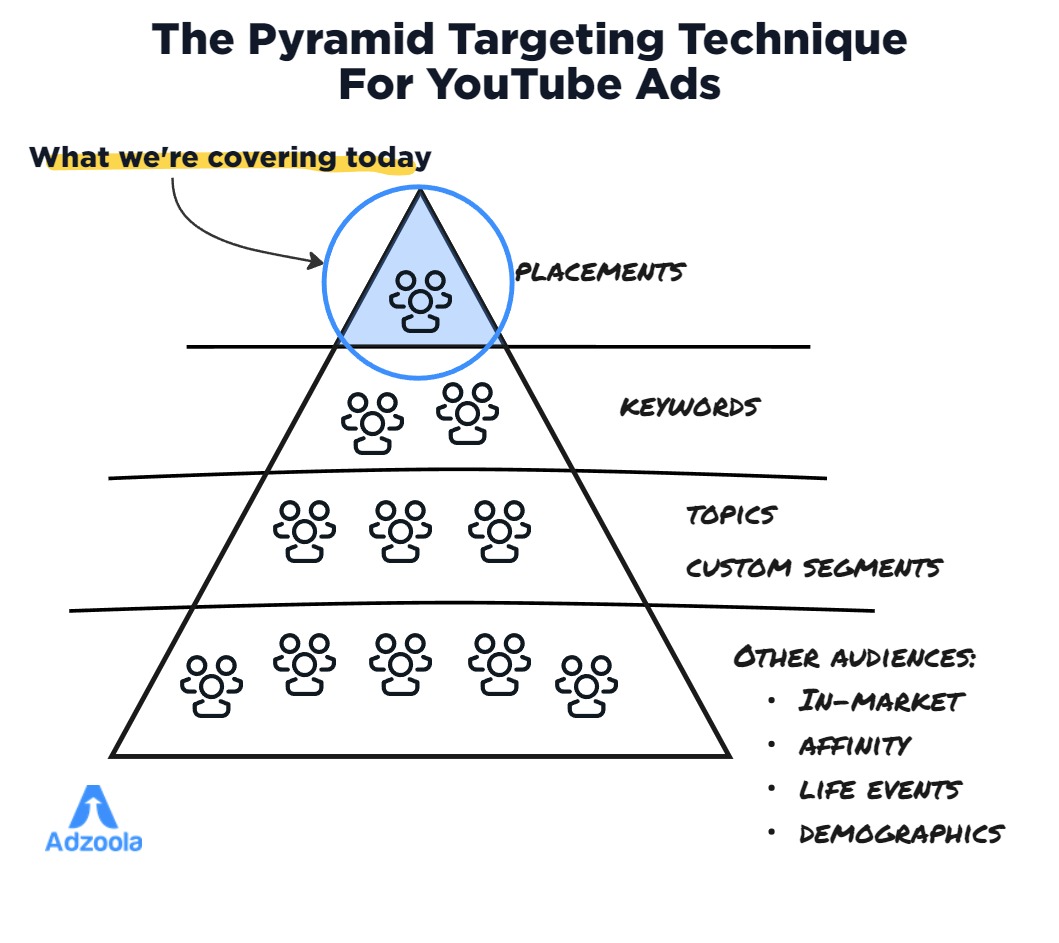
This laser-focused method allows you to hand-pick exactly where your ads will be displayed – giving you unrivaled control.
Here’s why you’ll want to start with YouTube’s placement targeting:
1. Profit-Producing ROI Potential
With tight audience targeting you’re putting your ads directly in front of a highly relevant, interested crowd. This precision-striking ability maximizes your chances of driving conversions by meeting their intent with your message.
2. Small Budget, Big Results
Since you can start with a small number of placements, placement targeting is ideal for affordably testing different ads and messages without blowing your budget. Find your winners first, then scale up (working your way down the pyramid).
3. You’re the Master of Your Audience
You choose the specific videos and channels to run your ads on, rather than relying on Google’s algorithms to figure out relevancy and serve your ads. This granular control helps ensure your ads stay hyper-focused on your prime prospects.
With such a narrow targeting method, audience sizes will naturally be smaller than broader methods like keywords, topics, custom segments and interests. But that’s the advantage – you can consistently put your brand in front of an audience you know have intent and interest at the moment you’re reaching them.
Placement Pitfalls to Avoid & Quick-Fire Tips
Placement targeting isn’t always a magic bullet. Advertisers often struggle with a few common pitfalls that sabotage their results. These will help you avoid being one of those who say “I tried, it doesn’t work” or “It won’t get conversions”.
1. Bidding Too Low
Given placement targeting is the most precise form of targeting on YouTube, it often requires higher bids to effectively compete in the auction. In practice, many advertisers pay less than their maximum bid due to the auction dynamics. Remember, you’re targeting an ultra-focused audience – it’s worth paying for that privilege.
2. Overly Restrictive Layered Targeting
Combining placement targeting with too many additional targeting restrictions, such as narrow age or geographical limits, can overly constrict the audience size and hinder performance. A light touch is often best.
3. Manual Optimization Neglect
Some advertisers struggle with high cost-per-acquisition (CPA) on placement campaigns. Often they haven’t engaged in regular manual optimizations. As it’s a manual campaign you’ve got to review and optimize regularly.
4. Misusing as a Scale Tool
While extremely powerful, placement targeting simply won’t reach the same stratospheric audience levels available on YouTube as broader methods. Use it as an intelligent testing bed and build scale with other targeting methods (further down the pyramid).
5. Keep your video and channel placements in different campaigns for easier management and optimization.
Keep your video and channel placements in different campaigns for easier management and optimization.
6. Mixing Videos and Channels
Keep your video and channel placements in different campaigns for easier management and optimization.
7. Path of Least Resistance
When starting out, it’s often easier to find well-performing individual video level placements rather than channel placements. Build from that base.
Setting Up YouTube Placements
To set up your YouTube ad campaign targeting placements, you’ll start by selecting ‘create a campaign without a Goal’s guidance’, then choose the Video campaign.
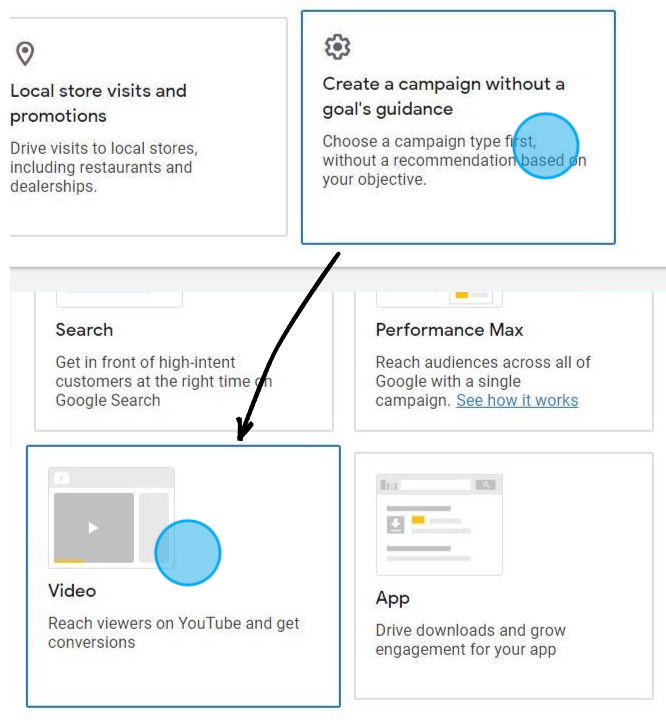
You can use placement targeting (and the other content targeting options) in four video campaign subtypes:
- Video Views – using Max CPV, Target CPV (with Multi-format ads enabled)
- Efficient Reach – using Target CPM
- Non-skippable – using Target CPM
- Audio – using Target CPM
I’d suggest starting with the Video Views Campaign (VVC) subtype if you’re running a direct-response style ad because you can use Maximum CPV (cost per view) bidding.
For in-stream skippable ads, you’ll only pay when someone watches your ad for 30 seconds or more (or watches the full video if it’s less than 30 seconds.) This is saves you money when you’re launching a new client or starting to advertise on YouTube, as it lowers your risk. You’ve chosen specific relevant videos or channels to show your ad on and you only pay when someone chooses not to skip in the first 30 seconds.
So select Video Views as the campaign subtype:
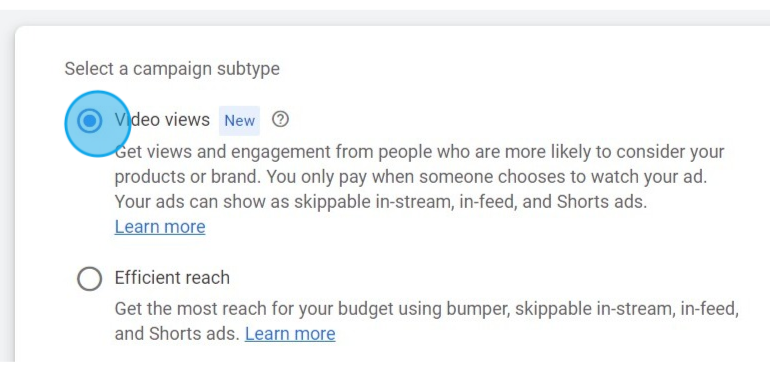
During setup it’s critical that you go to Network settings and uncheck ‘Video partners on the Google Display Network’. It’s easy to forget but it’ll cost you if you do. If you have this checked Google can (and often will) show your video ad on the Display Network, even if you only add placements to your targeting.

Scroll down and you’ll see the Content targeting options – keywords, topics and placements. Select Placements and navigate to ‘Enter’ so you can add your placements.
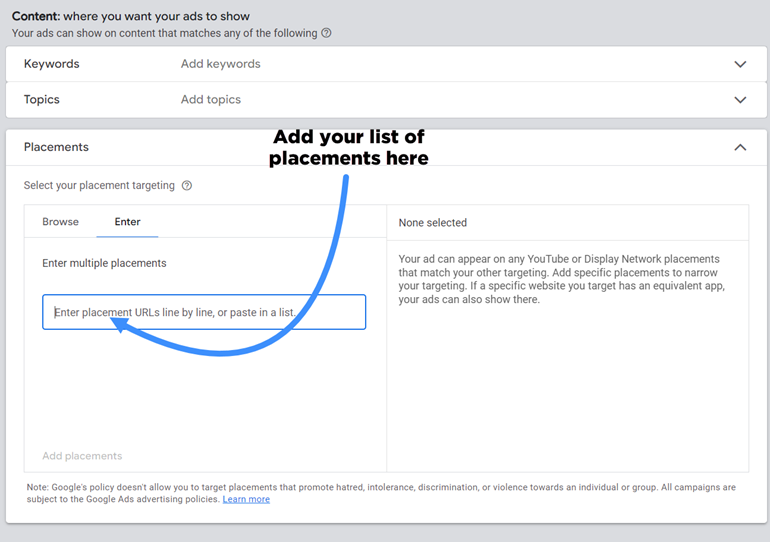
Don’t move on until you’ve actually clicked ‘Add X placements’, otherwise your placements won’t be added. I know it sounds obvious but I’ve seen cases where this has happened. It’s horrible having to tell someone they didn’t actually add the placements and the campaign has been spending that way for a while!
You can use research tools like my own, Adzoola, to find, filter and add video or channel placements to run focused campaigns to a relevant audience.
Test a handful of promising placements, analyze the results, then either maximize the winners or restart your sourcing process.
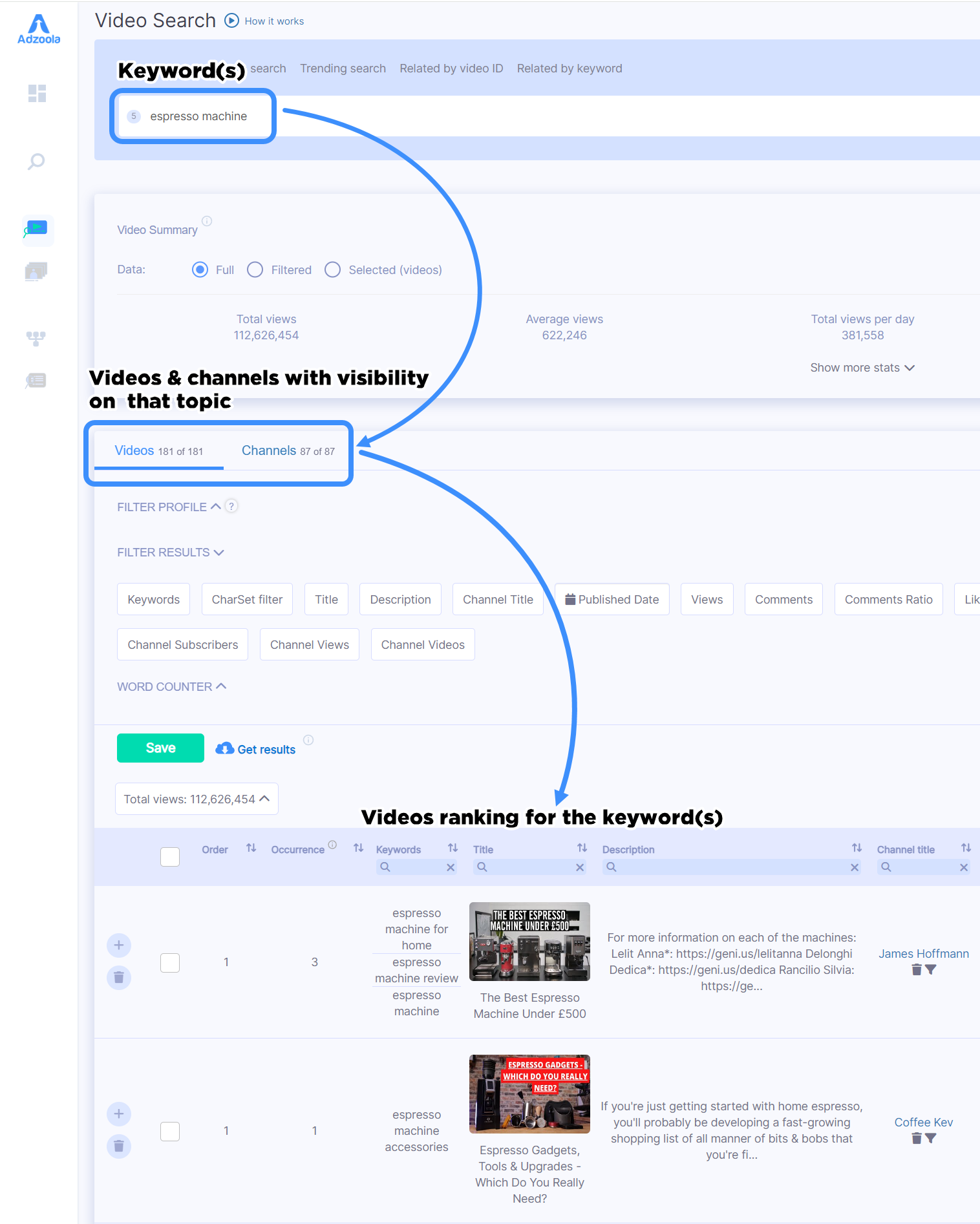
Don’t Sleep on Placements: The Low-Risk Testing Bed
For advertisers looking to maximize ROI from their YouTube ad spend – especially those operating with smaller budgets – placement targeting needs to be a core part of your strategy. The ability to put your brand and messaging in front of an ultra-relevant audience in a cost-effective manner is a game-changing advantage.
While placement targeting may require more manual management than automated campaigns, having that level of hands-on control could be the key to cracking profitable YouTube advertising for your brand and offering.
The Next Level: Scaling Up with the Pyramid
While placement targeting represents the pinnacle of precise YouTube audience targeting, it’s just the first step of a bigger picture strategy.
The Pyramid Targeting Technique is one of the frameworks I teach in my YouTube ads training course to strategically plan, manage, and scale YouTube ad campaigns. It’s designed to guide you along a path to profitable YouTube ads with less risk.
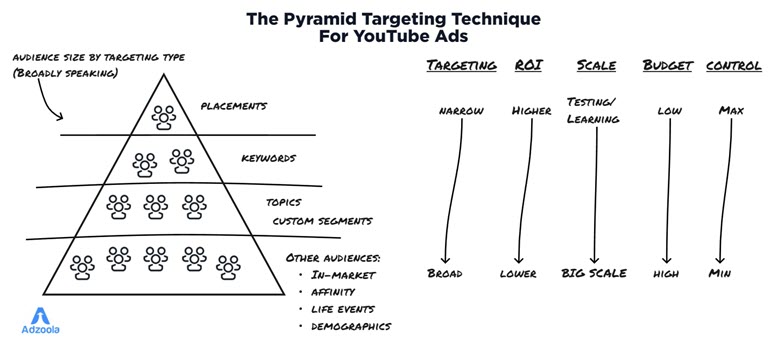
By following the Pyramid Targeting Technique and launching with focused placements, you minimize your upfront risk with lower budgets and maximum control. Once you’ve worked out your winning formula through this testing bed, you can scale your budget and expand targeting incrementally down the pyramid.
And, you can use it at almost any budget level.
If you’re a larger brand with a bigger budget and higher risk tolerance, you can skip levels of the pyramid entirely. Depending on your ability and willingness to go negative on profitability for a period, bigger players can take a more aggressive approach right away.
But for agencies, consultants and small-to-medium businesses, mastering YouTube placement targeting could be the safest and smartest first step for you.
Each successive level down the pyramid represents increased potential scale, but also becomes more hands-off and reliant on Google’s algorithms to optimize targeting. That’s why it’s so crucial for you to get your offering and messaging finely tuned and validated at the more controllable levels like placements first.
The pyramid provides you with a strategic framework to decide the appropriate starting point and level of risk based on your specific circumstances, risk tolerance and ultimate goals. The choice is yours, but this profitable, proven path is clearly mapped for you to follow.
Alex King is the founder of Adzoola and a YouTube ads specialist with over 14 years of media buying experience.
PPC
Google Shopping: A Beginner’s Guide to Crafting a Compelling Campaign Google Shopping: A Beginner’s Guide to Crafting a Compelling Campaign

With all the tools available online, there’s no limit to how you can advertise your eCommerce brand to consumers. With over 12-24 million eCommerce websites across the globe, what matters is how well you leverage these tools to help your business stand out from competitors.
There’s no better way to boost your online presence than with Google, responsible for handling nearly 8.5 billion queries each day. Google’s intuitive marketing tools, such as Google Ads, are trusted by more than 7 million marketers worldwide. If you’re running an eCommerce website, however, you need to be using Google Shopping Ads.
What are Google Shopping Ads?
Launched in 2012, Google Shopping is designed to help online retailers showcase their products visually. If you’ve ever gone looking for a particular item on Google, chances are you’ve come across them at the top of the search results page, lined up horizontally. There’ll be an image, product description, price, and store name. These are Google Shopping Ads.
Google Shopping Ads vs. Google Search
Google Ads and Google Shopping Ads serve different purposes. Google Shopping Ads are essentially product listing ads that help consumers easily learn about a product and where exactly to purchase them. Google Ads (or Google Search Ads) are text-based, relying heavily on copy, while Shopping Ads include images. Google Ads have a much broader scope since you can advertise anything using them, whether they be products or services. Google Shopping Ads can only be used to promote specific products.
The Benefits of Google Shopping Ads
Since Google Shopping Ads are typically displayed at the very top of search results pages, they will be the first thing consumers see when they search for products. This means increased brand visibility for online stores. By the same token, this type of ad can also help retailers reach out to a more specific demographic.
Since Google Shopping Ads collect product information, they can directly target the right audience for your line of business. Studies have also found that Google Shopping Ads achieve 30% higher conversions compared to traditional text-based ads, therefore ensuring better ROI.
4 Ways to Make Google Shopping Ads Work for your Online Business
Having explored the history and advantages of Google Shopping Ads, let’s dive into how you can include them in your eCommerce marketing plan to help you achieve online success:
1. Prioritize Product Feed
When creating Google Shopping Ads for your online store, it is imperative to include key information about your products. Google Shopping Ads highlight product names, images, descriptions, and categories – all of which are vital to your customers being able to find your products easily. For your product titles and descriptions, you may incorporate keywords that can make it a whole lot easier to search for specific items. Using appealing and high-resolution product images can give your website a boost in terms of click-through rates. Don’t forget to include prices.
2. Leverage Customer Reviews
When you look through Google Shopping Ads, you may notice some of them have star ratings. This is because Google allows retailers to display customer reviews in their ads to help promote their products. Studies have found time and time again that 93% of consumers check product reviews before proceeding with their purchases. Posting customer reviews can aid customers in making informed decisions and show them that your brand is trustworthy.
3. Optimize Campaign Structure and Product Groups
To see improve your ROI, you can try optimizing your campaign structure. This helps you manage your campaigns easily since it involves organizing certain aspects of your business such as product types and target customers. Organizing your products by categories can also help the Google algorithm accurately find the right items shoppers are looking for.
All you have to do is simply create different ad groups for different products. For example, if you’re running a clothing store, you can make a specific ad group solely for a specific kind of pants and aim them toward shoppers who are in need of this particular product. This will help your ads drive higher conversion rates and sales since they will only be seen by those who are interested in them.
4. Add Negative Keywords
As with search, one of the many features included in Google Shopping Ads involves the use of negative keywords. Negative keywords are phrases that prevent search algorithms from displaying results that are unrelated or irrelevant to what people are actually looking for. This feature increases search accuracy and makes it way easier for shoppers to find your products.
5. Categorize Ads By Demographics
Whether you wish to expand your reach or target a specific audience, it would be wise to organize your ads according to demographics. Collect pertinent customer data such as location, gender, age, shopping habits, interests, and frequent searches – this information can help you best determine what type of ads your audience will be inclined to engage with. Once you have these details, you can effortlessly target your ideal audience and promote your products among them.
6. Adjust your Bidding Strategy
Since you’re investing resources into creating your ads, it’s important to determine how much you’re actually willing to pay for them. If you’re able to maximize your Google Ads bidding strategies, you can help your brand rank better in search results. Here are some of the popular bidding strategies you can give a try:
- Target Cost Per Action (CPA) – for improving conversions by targeting a specific CPA
- Target Return On Ad Spend (ROAS) – for improving conversions by targeting a specific ROAS
- Maximize Conversion Value – for optimizing conversion value without targeting ROAS
- Maximize Conversions -or optimizing conversion value without targeting CPA
- Maximize Enhanced Cost Per Click (ECPC) – for automatically adjusting manual bids
PPC
How the TikTok Algorithm Works in 2024 (+9 Ways to Go Viral)
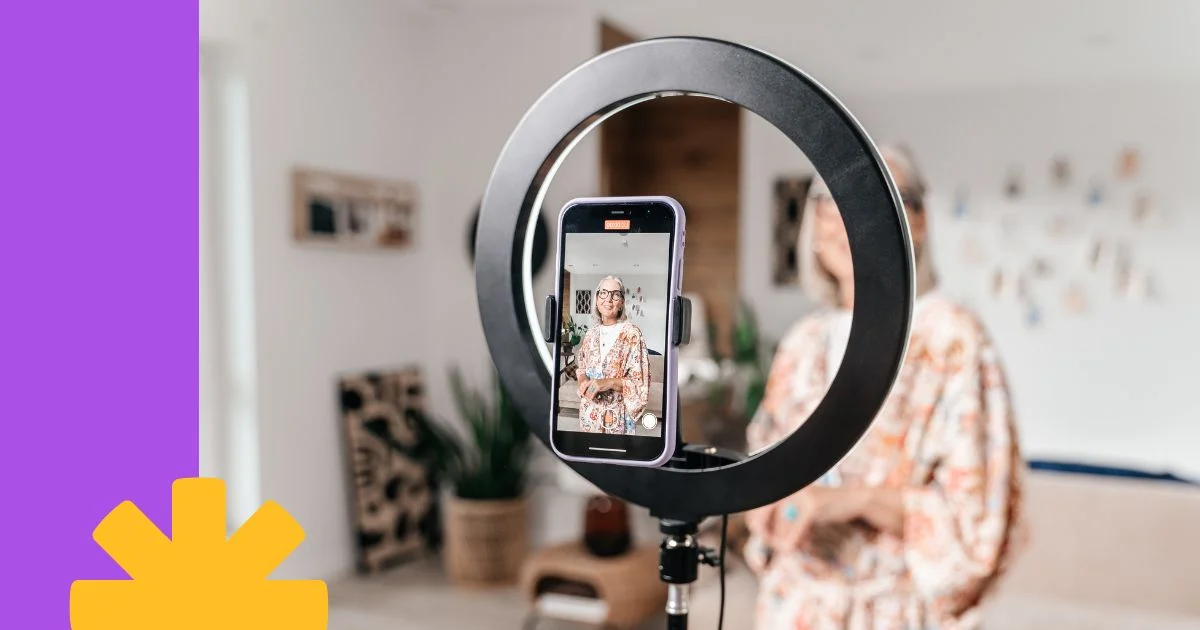
If you post videos and want more people to spend more time watching them, then you and TikTok have a common goal. That’s why I cringe a bit when I see people talking about hacking the TikTok algorithm for more likes and views.
You don’t need to trick it; you just need to know how the TikTok algorithm works. Once you understand its basic principles, you’ll know what and when to post for your best shot at TikTok virality.
But what about the potential US TikTok ban? TikTok has 148 million active users in the US. To paraphrase Samual L. Jackson’s character Nick Fury in Marvel’s Avengers, “Until such time as the world TikTok ends, we will act as though it intends to spin on.”
Let’s get into the weeds of TikTok’s algorithm, see how it suggests videos to individual users, and find ways to get your content on more viewers’ screens.
Contents
What is the TikTok algorithm?
The TikTok algorithm is a recommendation engine that decides which videos to suggest to each individual user.
On TikTok, recommended videos appear on your For You Page (FYP) when you first open the app.
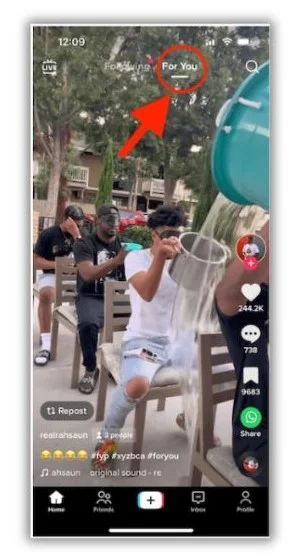
Everyone’s For You feed is unique and will change over time. TikTok pays attention to the videos you watch, where you post comments, and the accounts you follow. Each interaction is another signal the algorithm uses to refine your FYP—showing videos you’ll probably like while keeping videos you won’t off your feed.
💡 Want to grow all of your marketing channels? Download The Best Online Marketing Tips for Generating More Traffic, Leads, & Sales to get over 100 actionable growth marketing tactics.
How does the TikTok Algorithm work in 2024?
If you’ve ever sent your friend a cake recipe link because you remembered they love to bake, you get the gist of how the TikTok algorithm works.
Of course, TikTok’s proprietary algorithm is infinitely more complex than yours (no insult intended). It analyzes thousands of signals to determine which videos belong on your FYP. Let’s look at a few of the most influential ranking factors.
Factors TikTok uses to rank content
We’ll probably never know what every TikTok ranking factor is, but thanks to this post from TikTok itself, we do have an idea of a few ranking categories.
User interactions
Your behavior in the TikTok app is the most influential signal for the algorithm. Whenever you like a video or follow a particular account, TikTok uses that to understand your preferences further.
These are some of the user interaction signals TikTok will track:
- Watching full videos
- Following or hiding accounts
- Liking or sharing videos
- Commenting
- Reporting a video as inappropriate
- Adding videos to favorites
TikTok also uses what you say you are and aren’t interested in when you first join the app to guide its suggestions.
Other users’ interactions on a video can also determine whether you get it on your feed. If many people who share your interests watch and like a post, there’s a bigger chance you’ll see it, too.
Video information
On the flip side of the equation, TikTok reviews certain characteristics of the videos you’ve interacted with to see how they match your preferences. That’s important for creators to know since these are the things we have the most control over.
Here are a few of the video and post characteristics the algorithm looks for:
I’ll go into how to optimize your videos for TikTok marketing using these characteristics in a bit.
Device and settings
Device and settings are also user-specific actions the algorithm uses to recommend content. If you’re registered as a US user, you’ll see a lot more content made in the USA. But unlike user interactions, these are one-time signals that don’t typically change over time.
A few device and setting signals that may nudge the TikTok algorithm include:
- Language setting
- Country setting
- Device type
TikTok factor weighting
TikTok’s algorithm weights ranking factors based on how directly they indicate viewer preferences. Direct user actions, like watching a full video, carry much more influence than geographic location.
This means that while it’s good to be aware of all the ranking factors, your focus should be on posting content that your audience will want to watch and share.
Factors that don’t help (and could hurt) your content ranking
In its post, TikTok says it won’t give creators a boost based on past performance. Someone with a high follower count and previously viral videos won’t get preferential rankings over a smaller account with more relevant content.
Additionally, there are some types of content that TikTok will de-rank (show less or not at all) in your FYP. These include:
- Videos you’ve already seen
- Content that’s considered spam
- Duplicated content (like a second post of the same video)
- Videos with restricted content (like graphic medical procedures)
To be clear, some of this content will still be available if you search for it. It just won’t pop on your FYP.
How to reset the TikTok algorithm
TikTok’s algorithm finds the type of content you’ll love based mainly on what you’ve enjoyed in the past. Sometimes, the recommendations don’t keep up with your changing preferences, and your feed gets stale.
TikTok has built a way for you to scrub its algorithm so it starts from scratch. Then, your interactions moving forward will influence the content you get on your personal FYP.
Here are the steps to refresh your FYP:
- Open the TikTok app and tap “Profile”
- Go to the menu at the top and choose “Settings and privacy”
- Tap “Content preferences”
- Tap “Refresh your For You feed”
- Tap “Continue” and “Continue” again
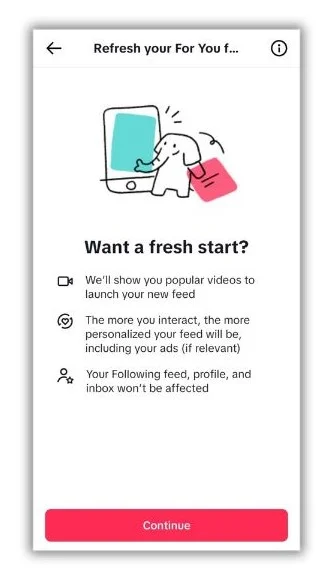

You can’t go back once you finish the process. But only your FYP will be affected. Your “Following” feed and profile won’t change.
📣 Free guide >>> 135 of the Best Words & Phrases for Marketing With Emotion
9 ways to use the TikTok algorithm to your advantage
Knowing how the TikTok algorithm works is half the battle. The other half is publishing engaging content that makes it easy for TikTok to find, categorize, and suggest your posts.
1. Hook viewers quickly
You have a fleeting second or two to grab a viewer’s attention and convince them to watch your video. Keep their thumbs from scrolling by adding an attention-grabbing hook that’s relevant to your audience.
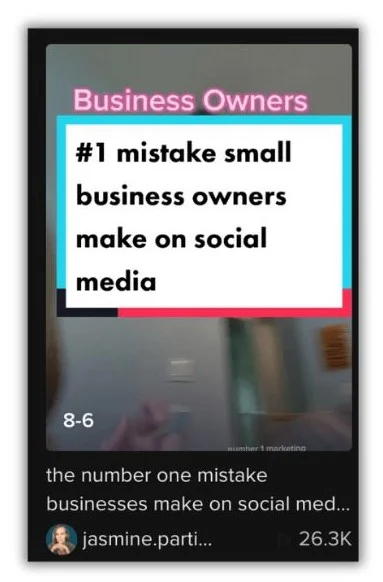

A great hook should give the viewer just enough information to make them want more. Try these tactics for your video hooks:
- Make a bold claim
- Ask a question
- Share a surprising fact
- Hint at a secret
Make sure each hook is relevant to your audience, and use emotional words to catch their attention.
2. Create niche content
It’s hard to gain footing with very popular topics on TikTok since many creators are already fighting for precious FYP placement. However, you can use the algorithm to your benefit by finding niche topics to post about.
For example, cooking is a super popular topic on TikTok. There are plenty of accounts dedicated to whipping up the best dishes. But Bobby Hicks of @theretrorecipekitchen uses his account to trial dishes from days of old. Many of the recipes he tests look tasty, while others look like…a veggie gelatin stack?
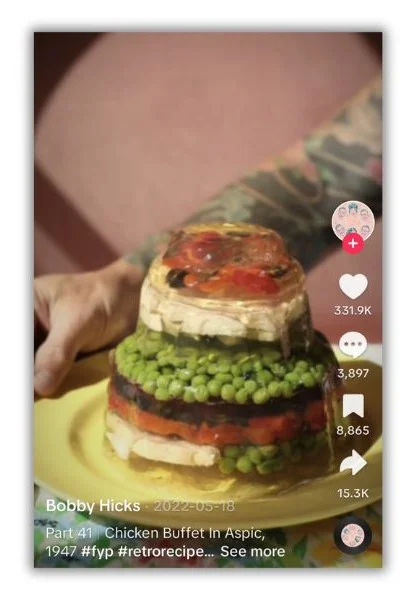

It may seem a little odd, but by focusing on one corner of a popular topic, Hicks has grown his account to over 150k followers.
Review the topics you’d like to use, and if they seem a little crowded, find a subtopic your audience would appreciate. That’ll leave you with fewer competitors in the race for the FYP. It’ll also make your content more relevant to a specific audience, which the algorithm loves.
3. Use TikTok SEO
Search engine optimization isn’t just for Google. Pretty much any time there’s a search function, you can optimize your content for it, and TikTok is no exception. Plus, even Google admits that TikTok is becoming a popular search engine in its own right.
In addition to the other tips in this guide, you’ll want to use keyword research to boost your TikTok SEO. Like on search engines, people use specific words and phrases in the search bar to find content on the app. Your job is to figure out what those words are.
Keyword research is easy on TikTok. Make a list of things your audience might search for that are relevant to your business. If you’re an esthetician, “skin care” might be one of them. Then, enter those words into the TikTok search bar and see what it auto-fills.
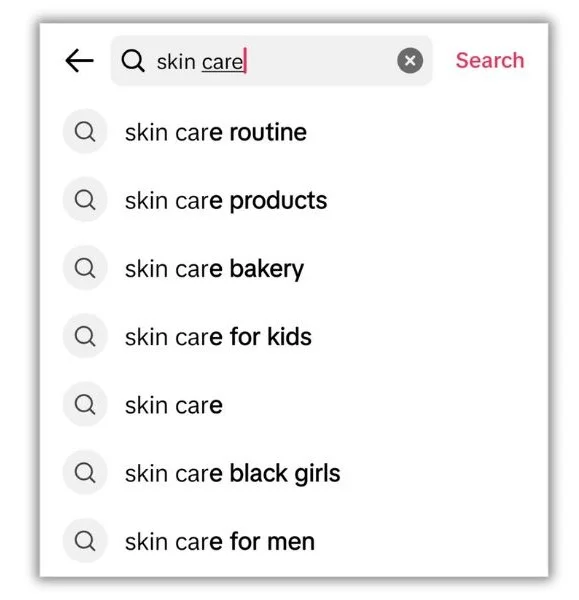

You’ll see options like “skin care for men” and “skin care routine.” Once you’ve gathered a list of keywords, plan out your content calendar to cover each term. Don’t forget to add keywords to your TikTok bio, too.
4. Tailor content to the platform
It’s smart to repurpose content for multiple platforms. But when it’s time to post it on TikTok, make sure it fits the app’s best practices.
First, produce and edit full-screen, vertical videos with a 9:16 ratio. That will fill the entire mobile screen while matching how most people view TikTok content.
Second, keep most of your videos short. While there’s no ideal duration for every video, in 2021, TikTok suggested that the optimal length should be 24 to 31 seconds. The platform has pushed for longer content, but many viewers find videos longer than one minute to be stressful, so it’s safer to keep them under 60 seconds.
Finally, for the best chance of your TikTok videos going viral, keep them positive in tone. Semrush evaluated a large collection of viral TikTok videos and found that those with a positive, funny, or happy vibe did best.
Follow these best practices to get more early engagement, which the algorithm will use as a signal that your video belongs on more FYPs.
5. Post at the right time and frequency
The TikTok algorithm doesn’t really care what time or how often you post—at least not directly. But it does look at how much engagement an individual video gets. Knowing when and how frequently to post can give your videos a little engagement boost.
The right time
The best time to post on TikTok depends on when most of your audience will be on the app. The goal is to publish content a little before the peak potential viewing time to get them indexed and ready for your followers.
You can find that information in your TikTok analytics.
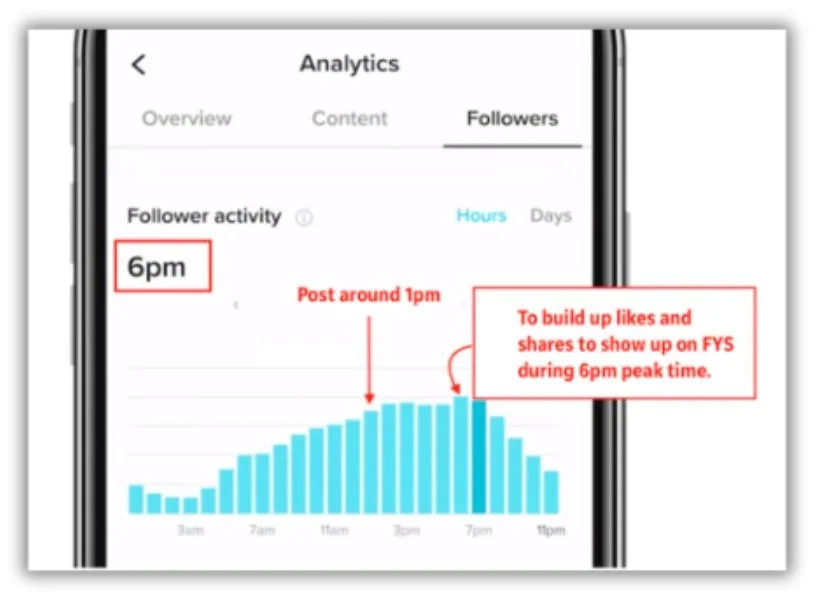

The right frequency
Consistency is essential for success on any social media platform. You don’t want followers to forget about you, and you want more chances to reach new viewers. But how do you quantify “consistency?”
Just like timing, learning how often you should post on TikTok will take some trial and error. TikTok says you should post up to four times per day (of course they do). More realistically, most brands post content to TikTok around two to four times per week (depending on which study you follow).
Here are a few tips to find your perfect TikTok schedule:
- Consider your creative capacity: Posting more often is great, but not at the expense of quality.
- Review other creators: Spy on your competition to see how often successful accounts in your niche post content.
- Watch your analytics: Vary your posting frequency over several weeks and see how it affects your views and engagement.
6. Incorporate hashtags
Using hashtags on TikTok can help you succeed in two ways. First, hashtags help the TikTok algorithm understand your content so it can better match it to user preferences.
Second, TikTok users use hashtags to search for content, so when your video is tagged, it may show up in their search. As we know, when more people see your content, the algorithm will show it to more people with similar interests.
You can find which hashtags are trending in TikTok’s Creative Center.
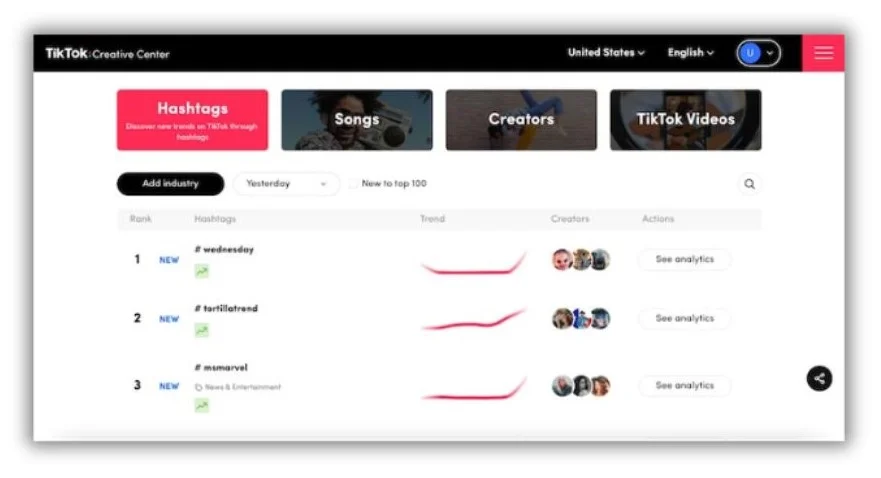

Here are a few tips for using hashtags on TikTok:
- Don’t use too many: One to four hashtags will usually do the trick without making your post look spammy.
- Use different types: Combine branded, topical, popular, and niche hashtags for the best mix of reach and relevance.
- Include seasonal and holiday hashtags: Adding seasonal hashtags like #hellospring and #Holloweenscares lets you ride the wave of attention during peak times of the year.
7. Add popular audio clips
Audio clips work similarly to hashtags on TikTok. If an audio clip gets popular, and you like videos that use that clip, there’s a greater chance you’ll get more videos with that audio in your FYP.
Head back to the Creative Center to find trending songs.
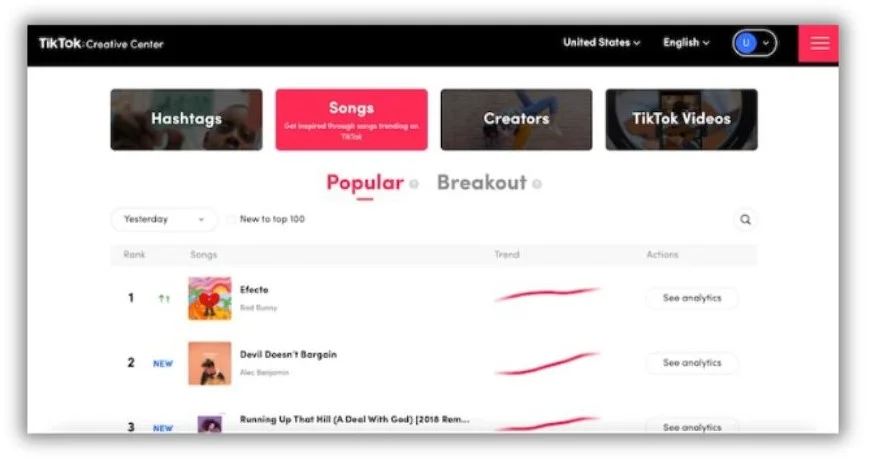

Look in the Popular tab to see which tunes are already getting a lot of play. Then, check out the Breakout tab to catch the next audio wave early.
8. Add captions
Many people don’t watch videos with the sound on. Adding captions to your posts lets those people follow along. But captions don’t just help you appeal to a broader audience. TikTok’s algorithm can learn more about your videos from the text of its caption.
TikTok makes it easy to add captions. Tap the Captions icon, and the app will automatically generate them.


Make sure you use the keywords you dug up in your video script. The algorithm will read those in the captions and know who should see your videos.
9. Jump on trends
One of the best ways to leverage the algorithm to get views is by following TikTok trends. A trend is a theme, idea, or trait of a video that already has mass appeal. That might be a common song or a dance.
Trends can also be challenges, like this one where one person holds another so they look like they’re in the iconic scene from the movie Titanic.
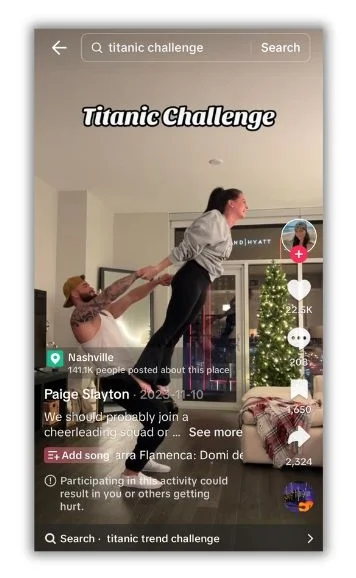

When viewers get hooked on a trend, TikTok sends them more videos to view. If you’ve jumped on the trend, the algorithm will put your video in that mix.
Work with the TikTok algorithm to go viral
The trick to social media marketing is remembering that social platforms want you to succeed. If people love the content you post, they’ll spend more time on the app—which is a win-win for everyone.
The key is learning how the TikTok algorithm works to make it your partner in success. Instead of fighting against the algorithm, find ways to leverage it, and you’ll leap-frog ahead of all the accounts trying to trick or hack it.
Here’s a recap of nine ways you can use TikTok’s algorithm to your advantage:
- Hook viewers quickly
- Create niche content
- Use TikTok SEO
- Tailor content to the platform
- Post at the right time and frequency
- Incorporate hashtags
- Add popular audio clips
- Add captions
- Jump on trends
-

 MARKETING6 days ago
MARKETING6 days agoA Recap of Everything Marketers & Advertisers Need to Know
-

 PPC4 days ago
PPC4 days agoHow the TikTok Algorithm Works in 2024 (+9 Ways to Go Viral)
-

 SEO3 days ago
SEO3 days agoHow to Use Keywords for SEO: The Complete Beginner’s Guide
-

 MARKETING4 days ago
MARKETING4 days agoHow To Protect Your People and Brand
-

 SEARCHENGINES5 days ago
SEARCHENGINES5 days agoGoogle Started Enforcing The Site Reputation Abuse Policy
-

 SEO5 days ago
SEO5 days agoBlog Post Checklist: Check All Prior to Hitting “Publish”
-

 PPC6 days ago
PPC6 days agoHow to Craft Compelling Google Ads for eCommerce
-
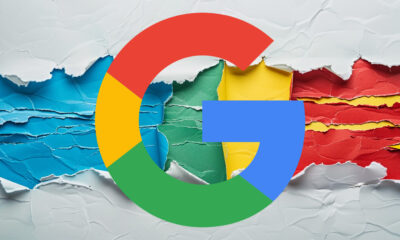
 SEARCHENGINES6 days ago
SEARCHENGINES6 days agoGoogle Says Again, Sites Hit By The Old Helpful Content Update Can Recover


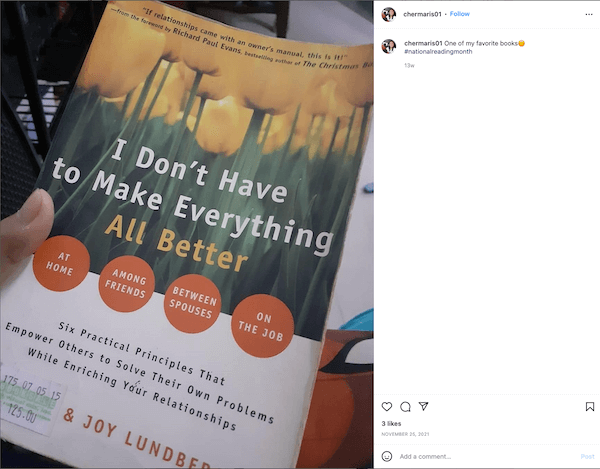
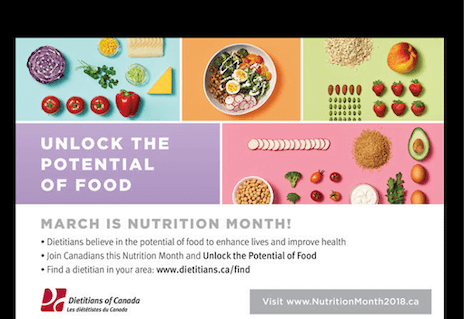
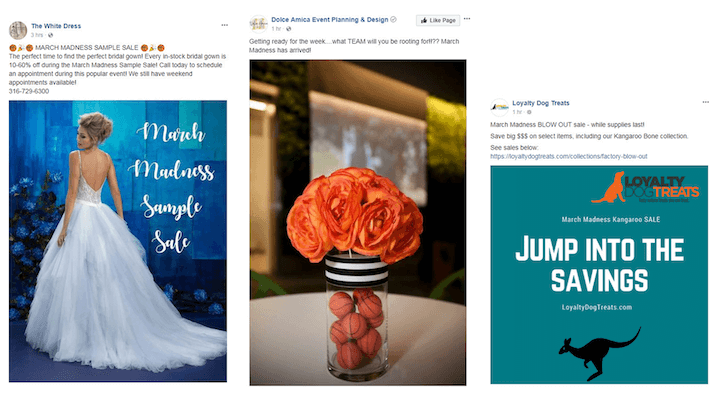
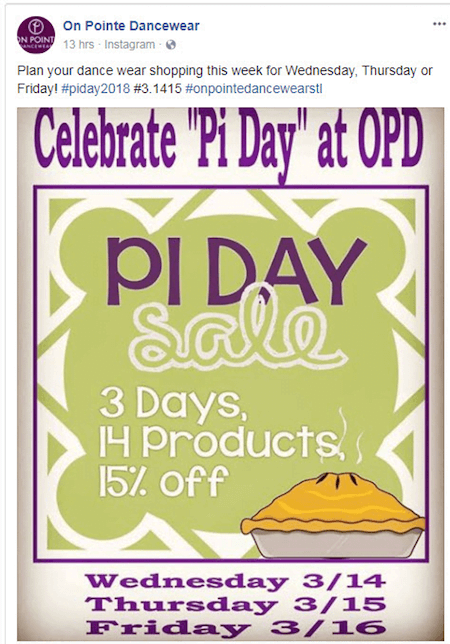














You must be logged in to post a comment Login